We’ve had a go at the new Proton X90, and here’s our first impressions on the company’s latest SUV, the third X model after the X70 and X50, the flagship of the range. The latter is what the X90 is billed as, and on the surface, it makes perfect sense – the X90 is larger than the C-segment X70, has three rows of seats and will be priced a fair bit higher too. But as we found out from the media preview drive, it’s not so clear cut. More on this later.
LINK: Book Proton X90 online now
By now, you would not just have heard about the Proton X90, but have a pretty good picture of what’s on offer, if you checked out Hafriz’s comprehensive walk-around commentary (not video, because no cameras were allowed at the static preview session). Here’s a recap.
The X90 is a D-segment SUV based on the Geely Haoyue, which is also known as the Geely Okavango in other markets such as the Philippines. Proton’s right-hand-drive VX11 – which by the way will be CKD Tanjung Malim from the start – has been given the X90 name to fit the local naming convention, placing it above the X50 and X70 SUVs.

At 4,835 mm long and 1,900 mm wide, the X90 is 316 mm longer and 69 mm wider than the X70. The seven-seater’s wheelbase is 2,815 mm, which is 145 mm longer than the X70’s. Conceptually, Proton’s largest model will compete with three-row SUVs such as the Mazda CX-8, Hyundai Santa Fe (facelift coming soon) and Kia Sorento. Its size is between the CX-8 (larger) and Santa Fe (smaller), but you get the ballpark.
As in the norm with SUVs of this size, the X90 can be had as a seven-seater (2-3-2) or six-seater (2-2-2), with the latter positioned as a more luxurious option. Indeed, only the top Flagship variant of the X90 gets the six-seat option with two individual “captain seats” in the middle row; the Standard, Executive and Premium have a bench for three.
Unlike the X50 and X70, all X90 variants are powered by the same engine. The 1.5 TGDI unit in question is a familiar one from the X range, but the ICE is supplemented by a belt-starter generator (BSG) system to make it a mild hybrid. Proton is using “48V EMS” as branding (badge is below the wing mirrors), and it stands for electric motor synergy.
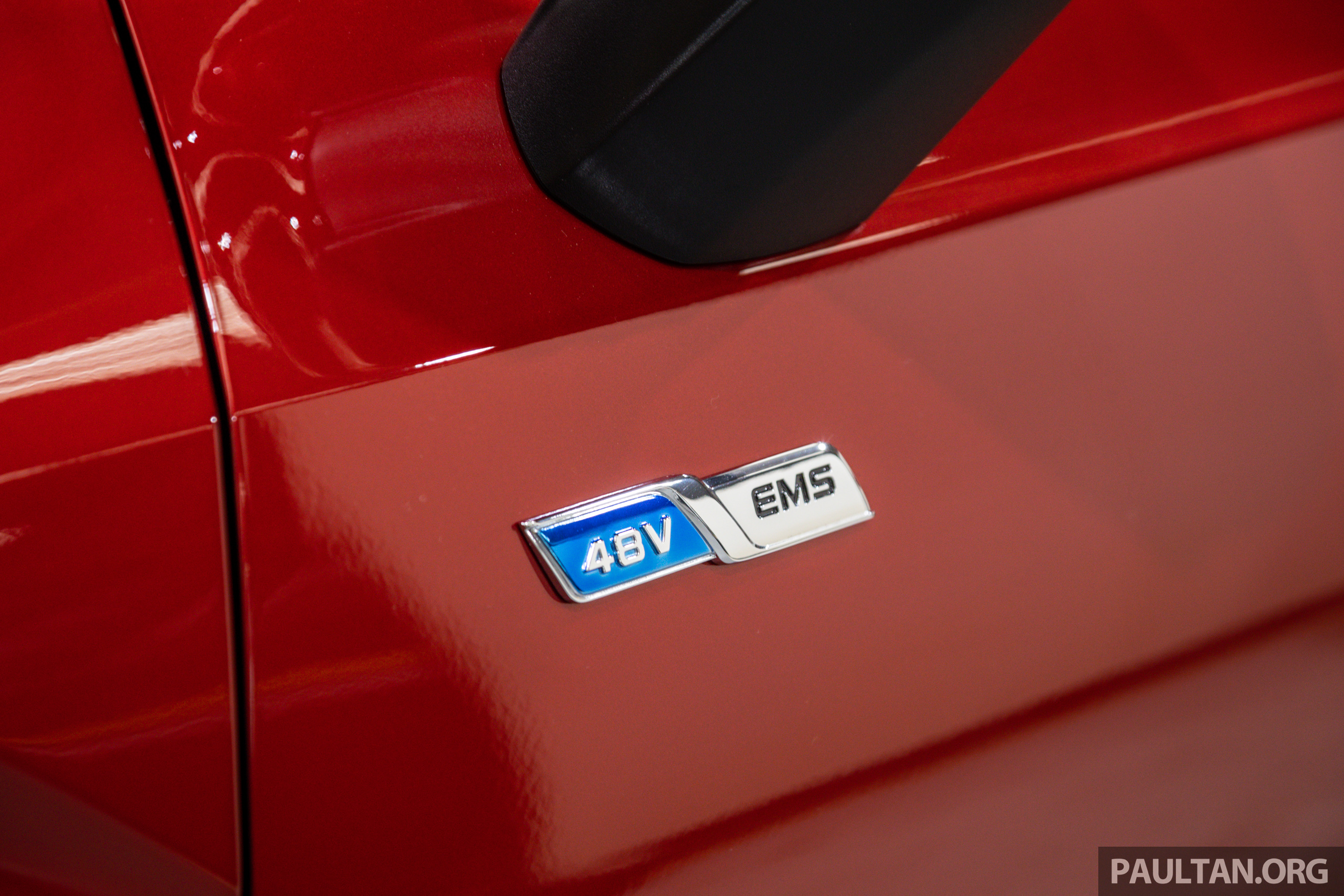
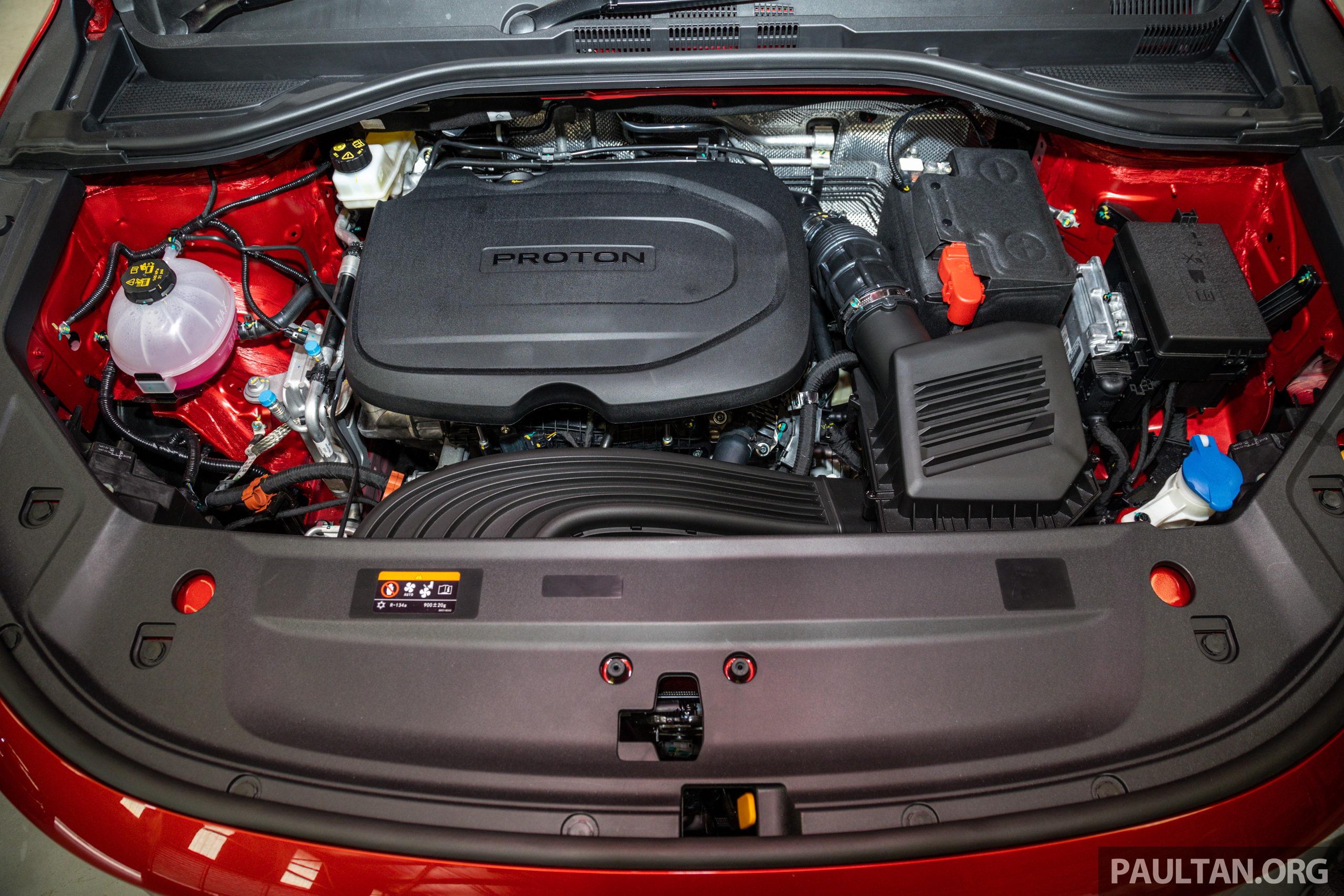
The EMS system integrates six key components – the BSG, a DC-DC converter, a shoebox-sized lithium-ion battery in the boot floor, battery management system, recuperation braking system and the hybrid module control system. The gearbox is a seven-speed wet dual-clutch unit driving the front wheels – there’s no AWD variant here.
In the X50 Flagship and X70 MC, the 1.5 litre three-cylinder turbo engine produces 177 PS and 255 Nm of torque. Here, the BSG adds on 13 PS and 45 Nm for total output of 190 PS and 300 Nm.
Compared to the 1.5 TGDI without the EMS (in the X70), Proton claims that the mild hybrid boosted powerplant improves standing start acceleration by up to 10%, improves passing acceleration by up to 15% and reduces CO2 emissions by up to 13%. However, note that the baseline is the smaller X70. In any case, the X90 is a bigger car so any help is welcome.
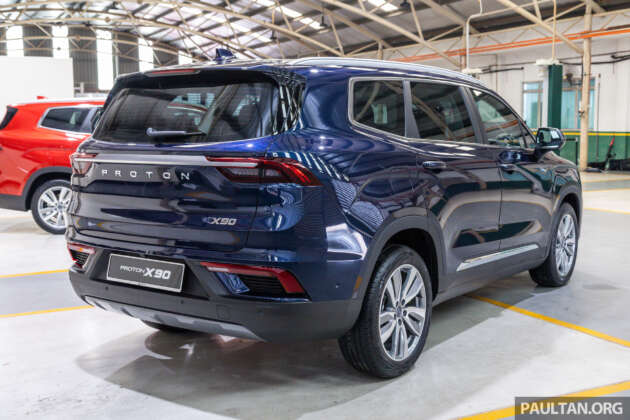
Torque assist aside, here are some comfort benefits to having a BSG system too. Auto start-stop turns the engine off when the car is stationary, and ‘comfort start’ delivers a smoother and quieter launch when you get going. ‘Smart glide’ disengages the gearbox during coasting (between 30 and 120 km/h) to reduce engine braking for a smoother experience, and when you’re slowing down, the engine switches off at below 15 km/h (instead of 0) to improve fuel economy and reduce vibrations during stop-start.
Did we feel the mild hybrid do its thing? Not really, but working unobtrusively in the background is definitely a good thing. I suspect that without the knowledge of the EMS and what it does, most owners/test drivers won’t notice the system’s comfort/boost effects, since it’s quite hushed at low speeds anyway and the digital meter panel’s tachometer isn’t in the regular analogue gauge layout. Seamless is good.
The X90 is a quiet and comfortable drive when you’re just puttering along, but based on my memory of the X70, there’s more road noise in the cabin. We also heard more of the engine when accelerating, and the tune of our tester’s TGDI sounded gruff, almost diesel-like without the vibrations. This surprised me a bit, as I was expecting X70 levels of NVH. I think that’s fair, since the X90 is supposed to be the flagship of the range.
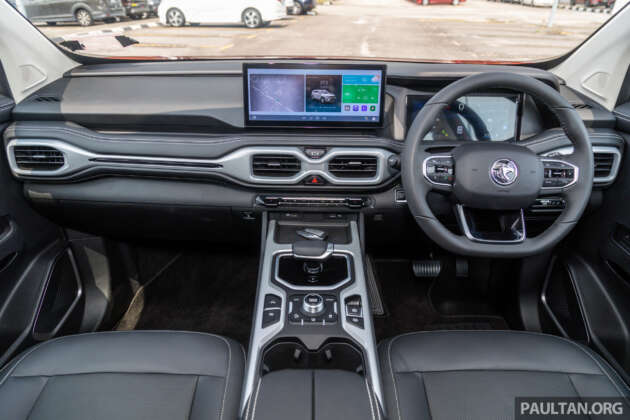
To be sure, I asked my Paultan.org BM and CN colleagues (three of us shared the car with a Proton rep) and they confirmed that it wasn’t just me hearing things. Now, it has to be clarified that the X70’s isolation is rather exceptional and the X90’s cabin noise levels isn’t annoyingly high by any measure. But it’s there to note.
When asked, Proton engineers insisted that NVH for the X90 is equal or better than the X70, so there’s that. Also, it must be noted that the media preview cars were pre-production units. In any case, we’ll be getting the X90 for a more comprehensive test drive once it is launched.
By the way, pop the hood and you’ll be able to see the X90’s engine in full. Before you scratch your head, the X70 – and to a slightly lesser extent, the X50 – have fully-enclosed engine bays where all the mechanical bits are hidden from view. This is a thing in China and some of the Cherys we recently previewed had zero visible engine, too. We’re not putting two and two together here, just saying.


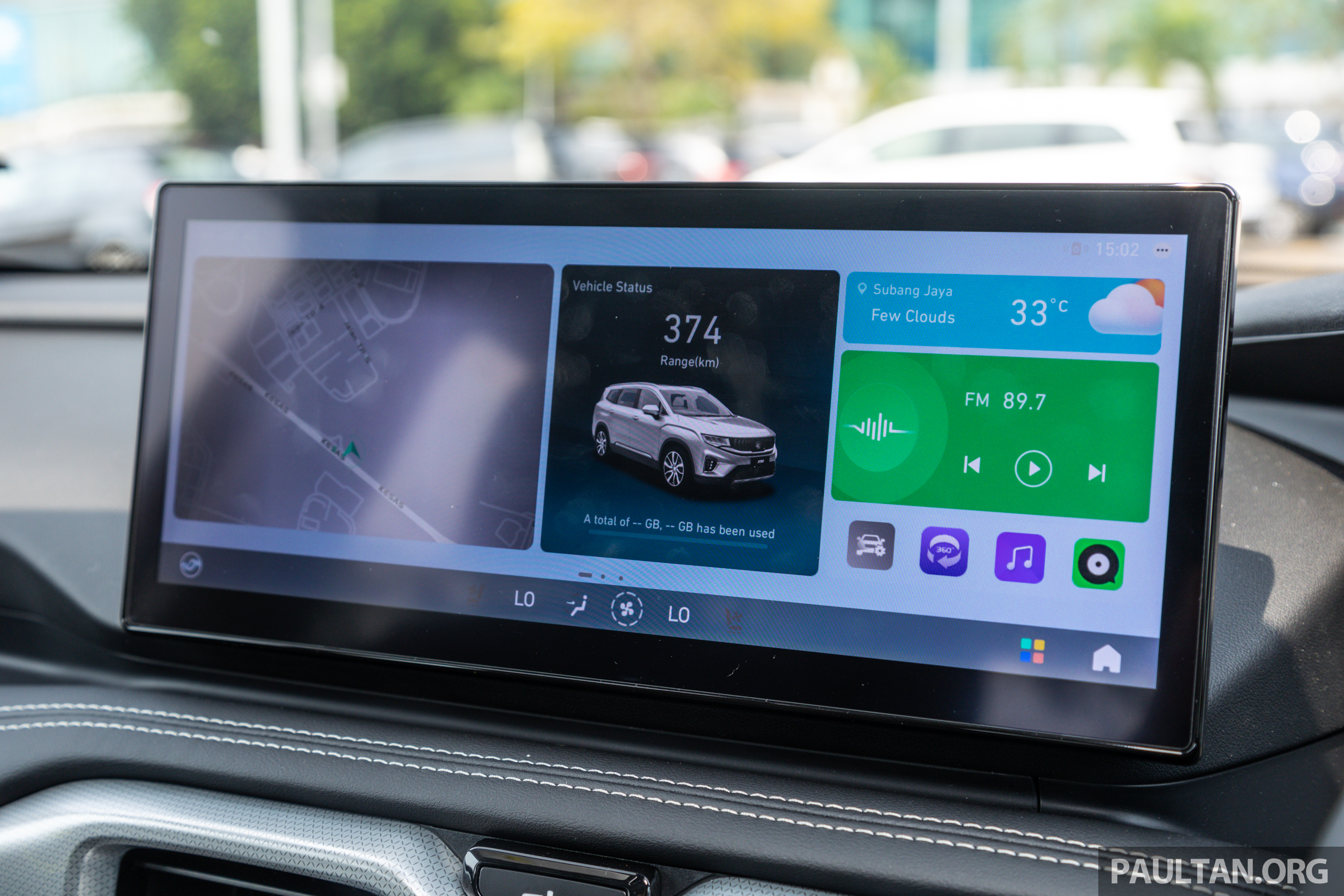
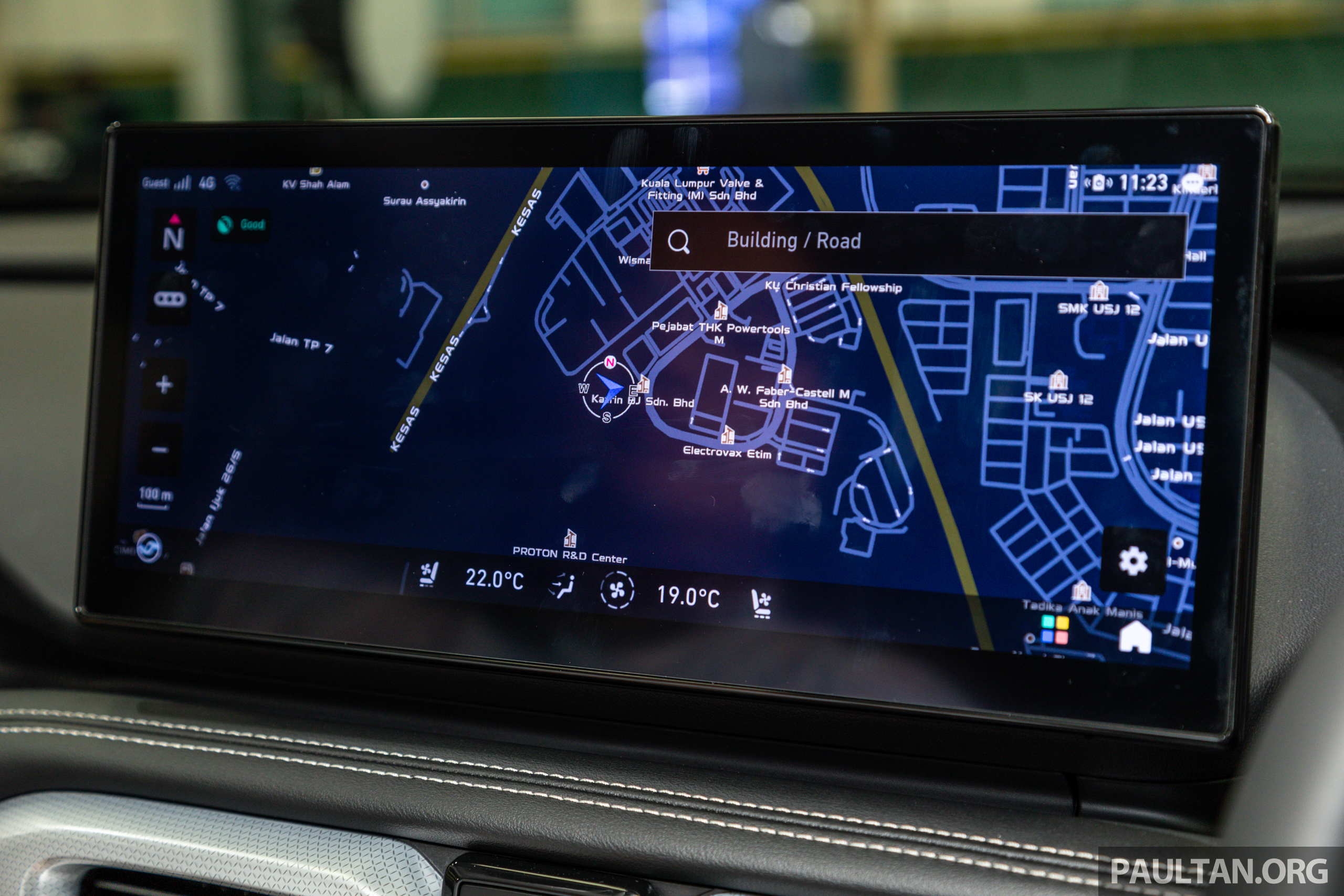

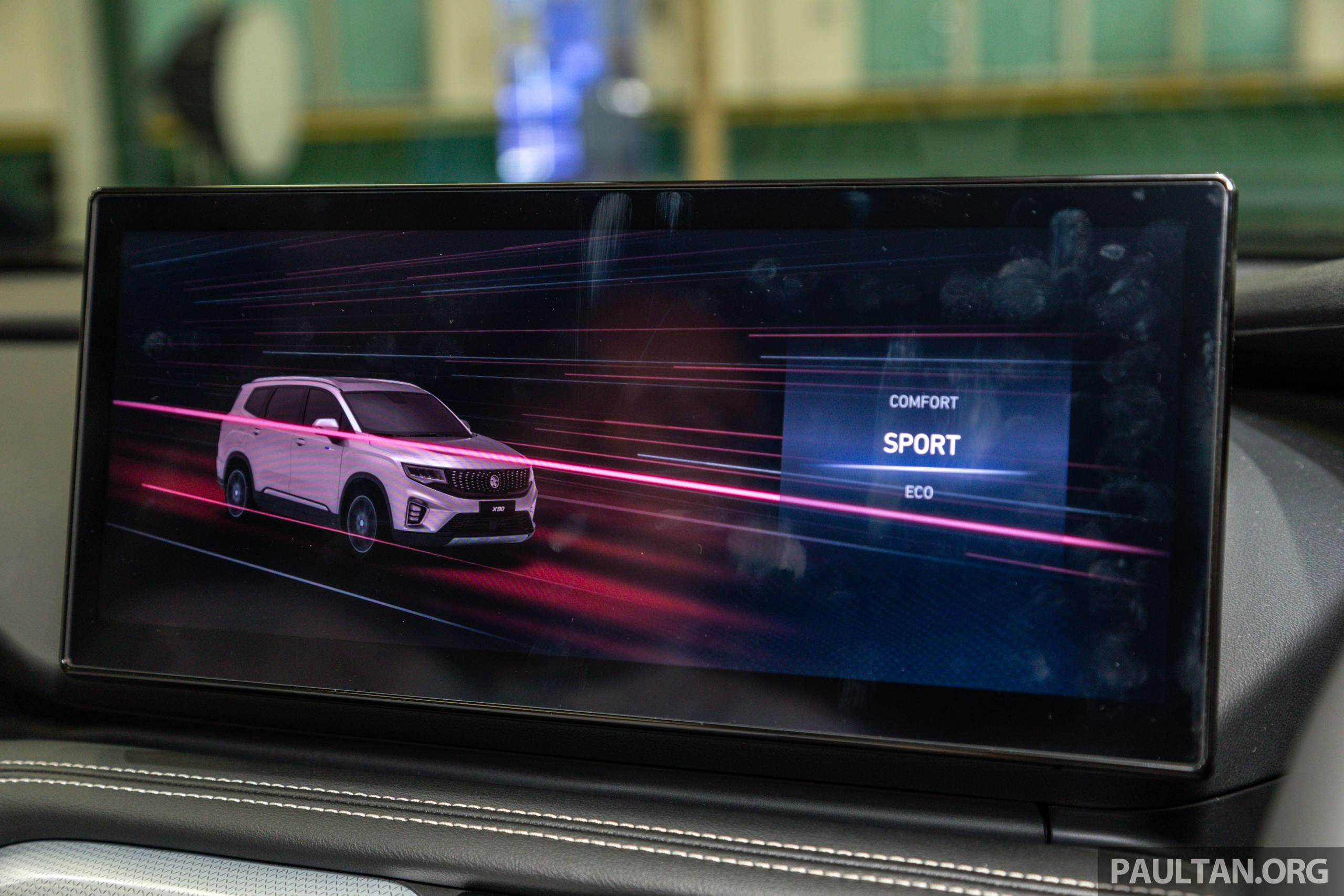
Also unanimous is our opinion that the X90 isn’t a fast car. Again, speed is relative, but we’re mentally comparing it with other SUVs in the market. There’s a slight but noticeable delay between stepping hard on the throttle and the car picking up speed. Overtaking takes a fair bit of effort, and time, as you hear the engine giving all that it’s got. With four adults onboard, effortless it certainly is not.
Much of the second half of the Genting climb was done standing on the gas pedal, and you might rue the loss of momentum. So, the X90 doesn’t have bags of reserves when it comes to grunt and pace, but is this a deal breaker? No, not unless you’re a Genting taxi driver or a great lover of the unique activities at the hill resort. For most of the time, the performance is adequate for a family SUV.
Our test route didn’t have any rough or deformed road surfaces, but we suspect that the X90 will ride well in the urban jungle. The big SUV’s highway ride isn’t too soft and bouncy, while body roll is well-contained even on our twisty route. The steering feels natural in speed and weight. Overall, the X90 is a pleasant steer, which isn’t a given when it comes to cars developed for the Chinese market.
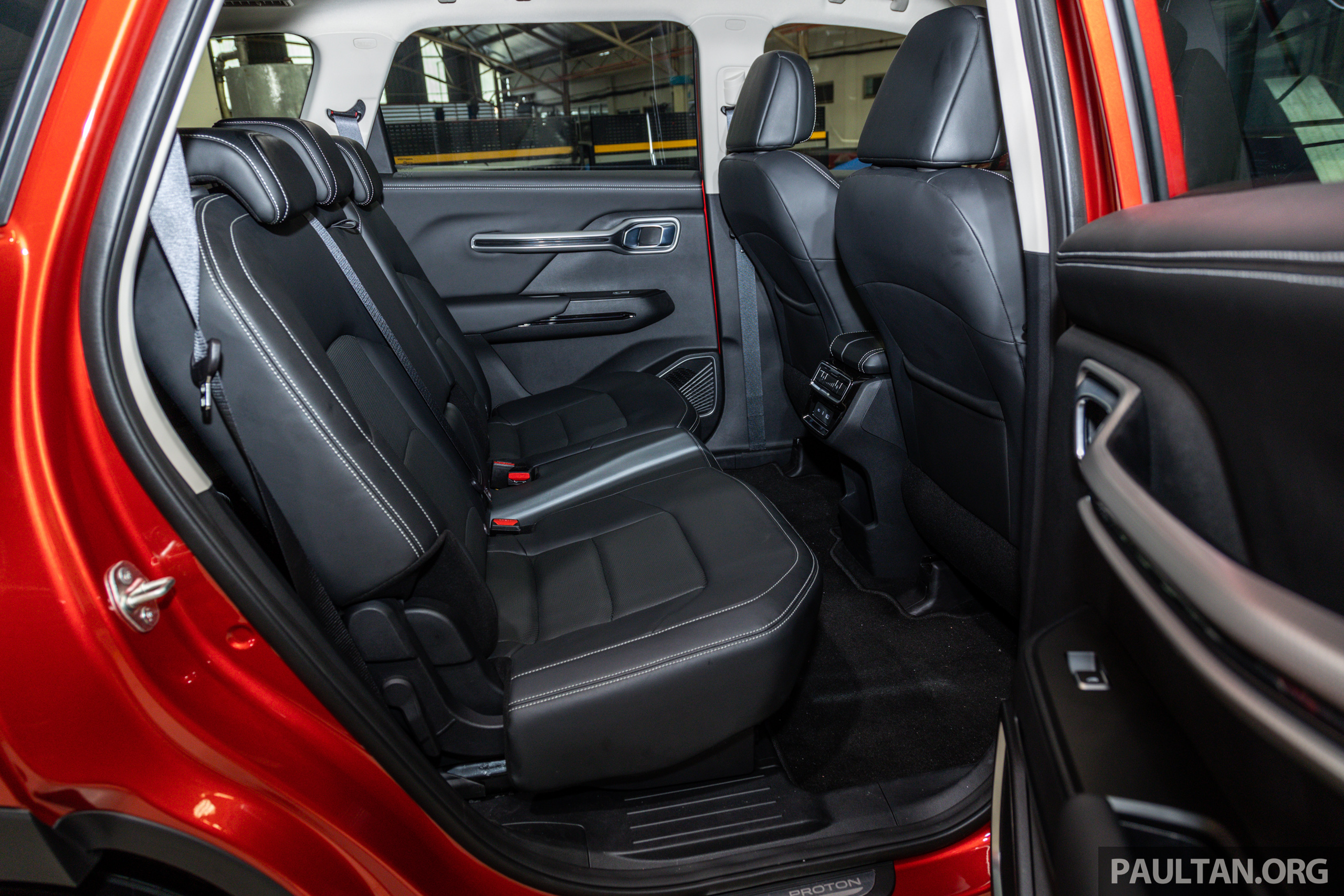

The interior of the X90 is a bit of a mixed bag for me. Our Premium tester had a wide 12.3-inch central touchscreen and a full digital instrument panel. The latter is a step up from the screens in Proton’s other SUVs, which are square units flanked by physical gauges. The graphics for both screens look sharp and the overall feel is very high-tech. Also very clear is the camera feed. Interestingly, the image of the X90 on screen can be personalised to match your car’s colour and even number plate!
There’s no Apple CarPlay and Android Auto compatibility, so navigation is left to the ATLAS OS’ native maps. Here’s a true story. Colleague Jason was driving back to Proton COE from Genting, and I fell asleep in the passenger seat. When I woke up, I was shocked to see Jalan Kuching traffic and Sogo on my right. Upon realising that it wasn’t a dream, I quizzed Jason and he said he intentionally followed the navigation as an experiment, which is why we he didn’t enter DUKE from MRR2, which would have led us to the NKVE and Subang.
As if that detour wasn’t bad enough, the navigation then led us to Jalan Syed Putra and declined the NPE (near Midvalley) in favour of the jam on Federal Highway. Benefit of the doubt: perhaps it wanted to avoid tolled roads. Even so, I believe that many would prefer Waze or Google Maps. Shame, because the screen is big and beautiful, and the instrument panel has the ability to show a full-width map.
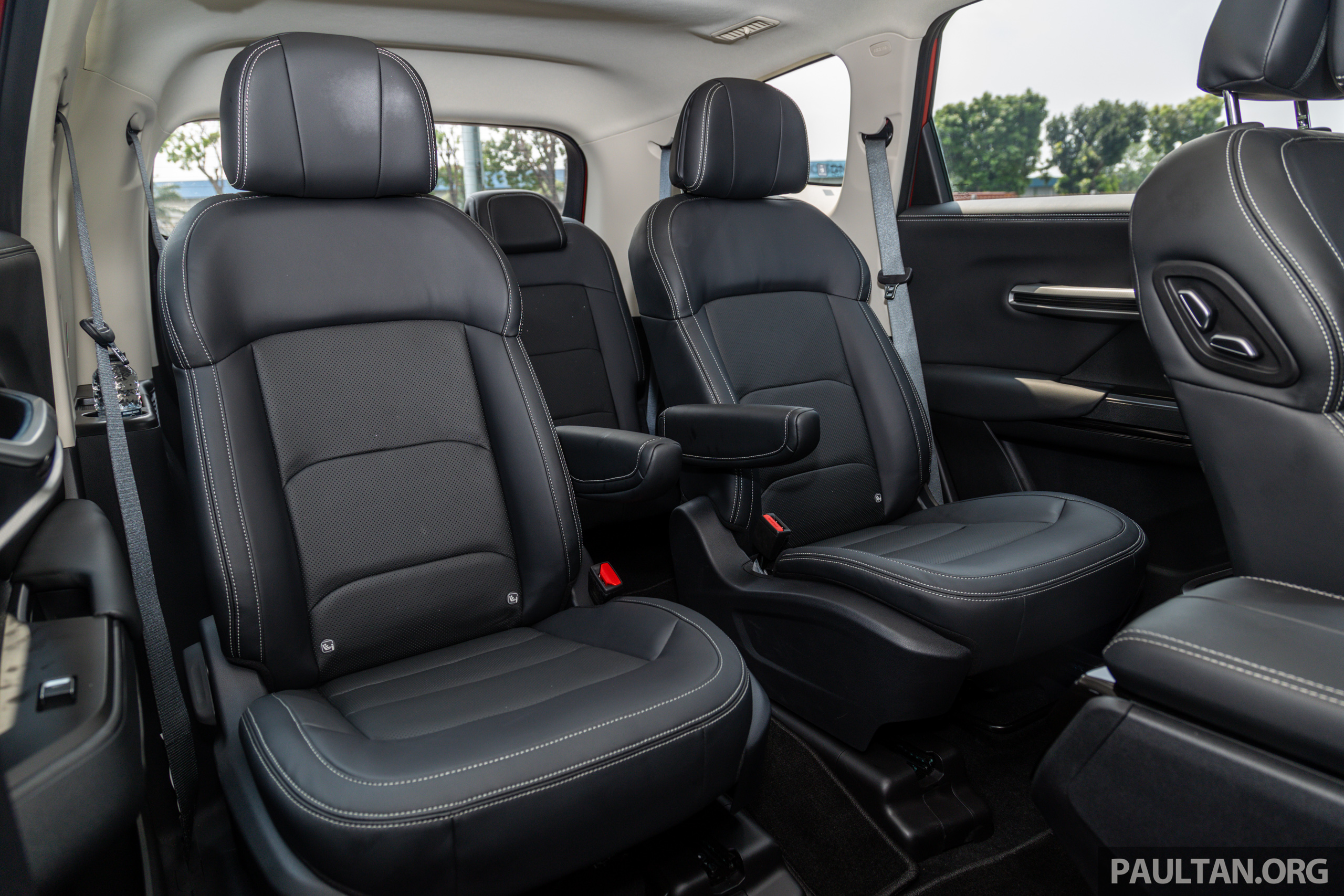
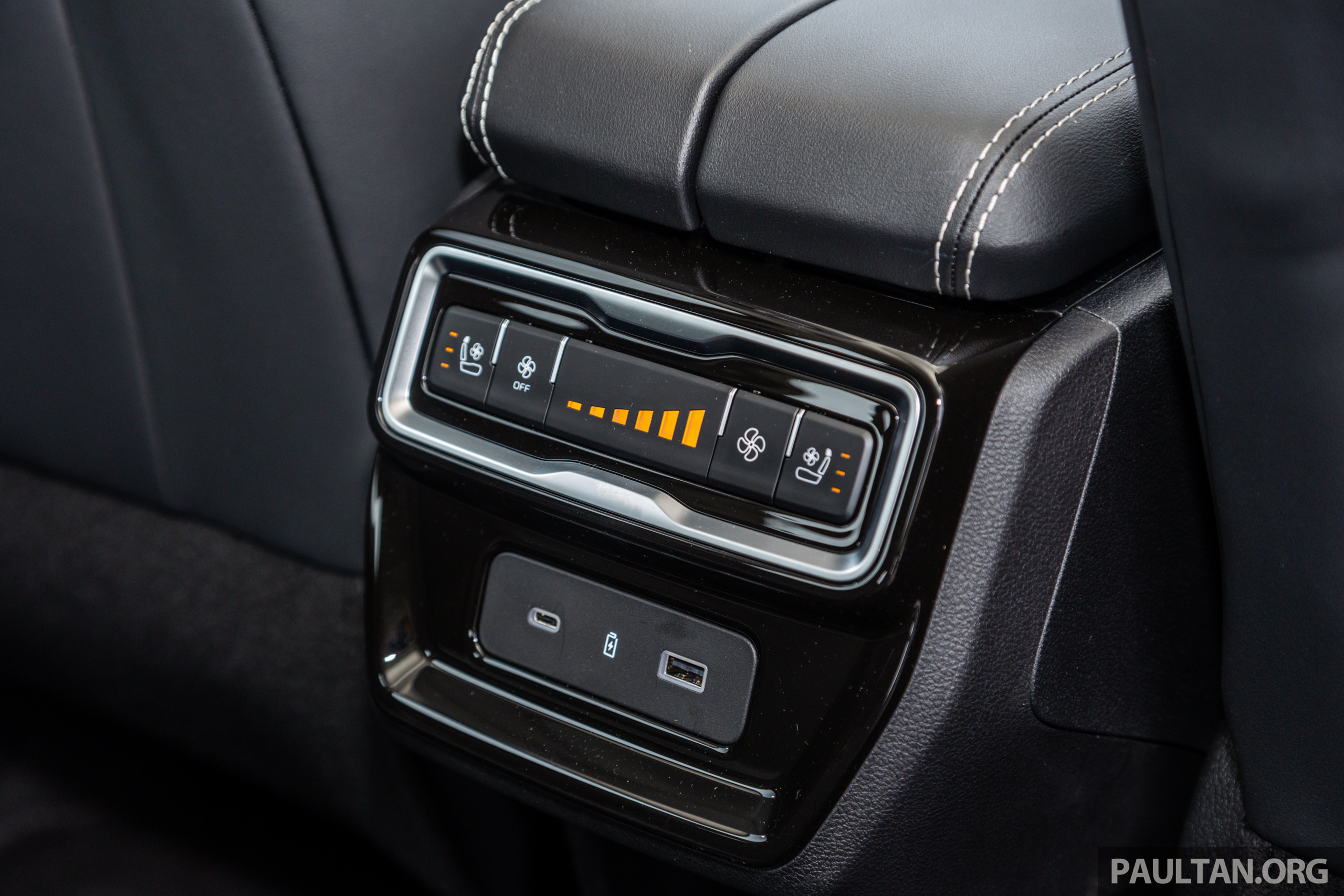
Proton has done very well with its SUV interiors, successfully providing a premium feel beyond the asking price. The X90 has soft leather covering the top of the door cards (even on the rear doors, which is nice) and the passenger-facing area of the dashboard. You’ll know where, because there’s contrast stitching on the black leather.
Speaking of which, Proton has opted to go with all-black for the X90’s cabin theme, even on the Flagship, a departure from the lighter shades on the X70/X50 that I thought was quite nice. IMO, the X50 Flagship’s red and the brown leather in the X70 added positively to the ambience of those cabins, enhancing their premium feel, but all-black is probably a result of customer surveys, and we know that Malaysians are pretty conservative when it comes to colours.
The leather is advertised as Nappa, but for some reason it doesn’t feel as supple as the hide in the X70. Not bad, just normal. Less normal is the hard plastic of the meter binnacle top and the sharp edges of the borders of the centre console, where it meets the centre stack. Curiously, the wing mirror control knob is in black and not metallic, which would look more upmarket and match the drive mode knob better. Once again, these are pre-production units and there might be trim or finishing differences in customer cars.
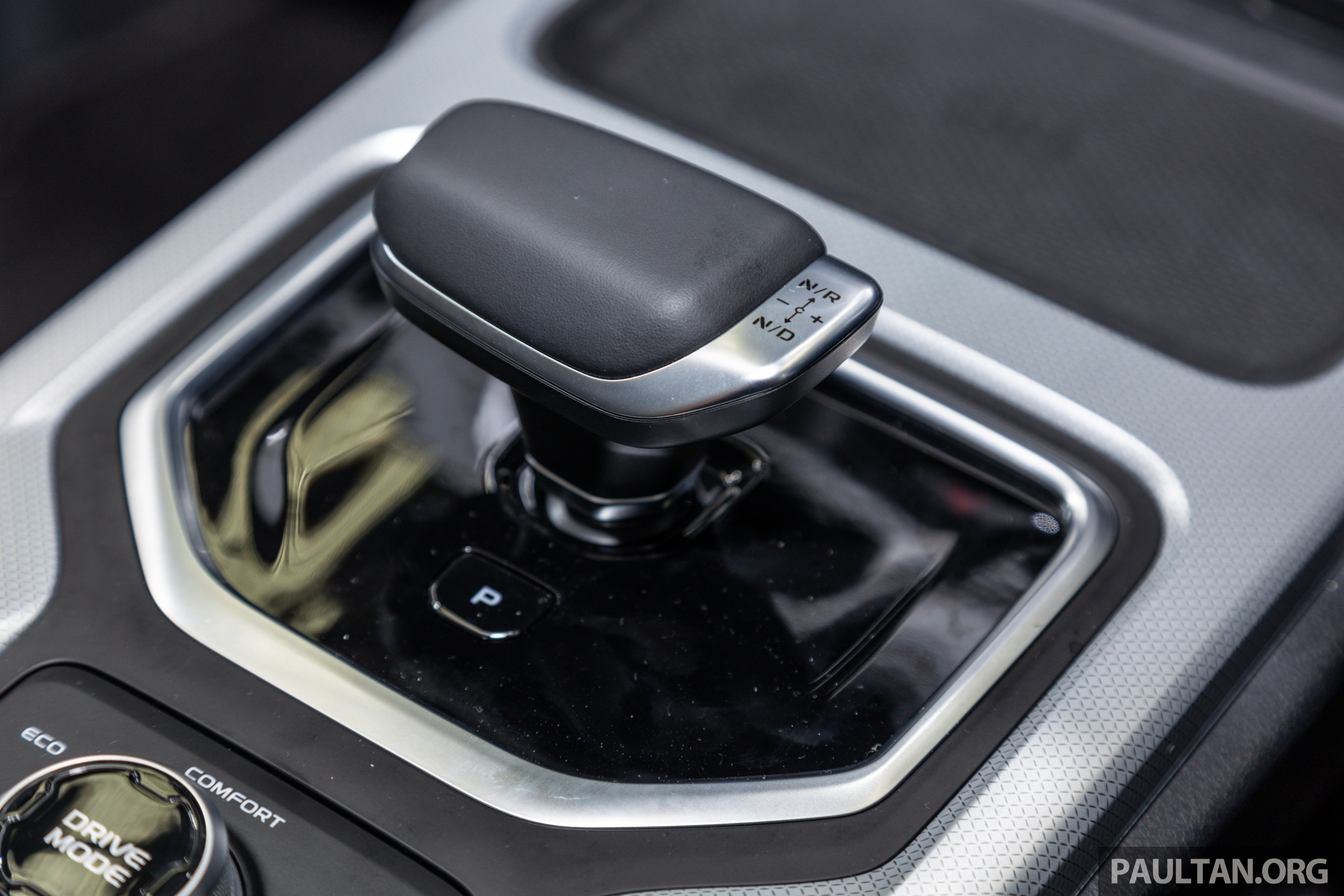
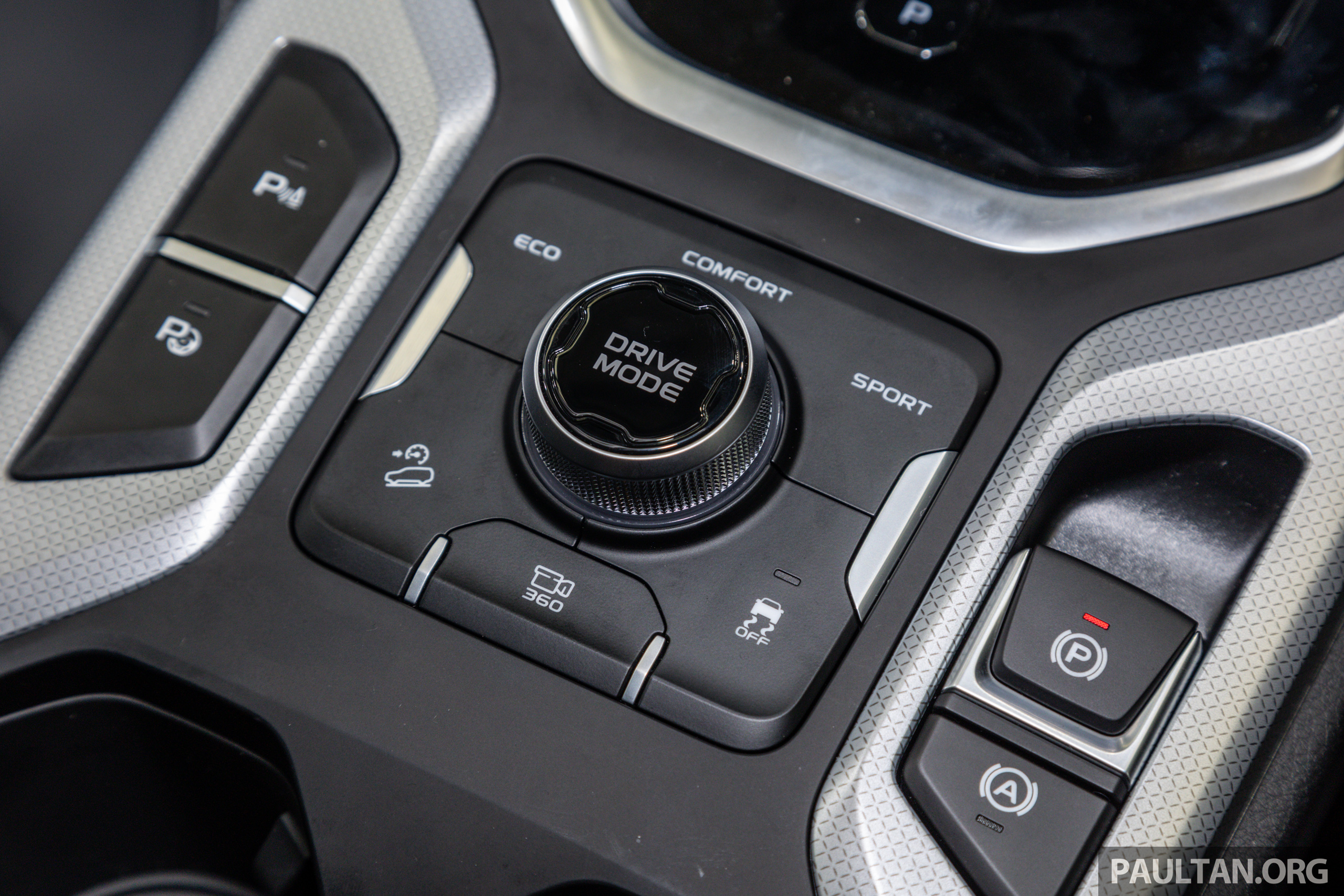

Moving on, the centre console has this cool-looking gear lever surrounded by huge lake of black. The console’s usable area is generous, perhaps so generous till it feels pretty sparse, to my eyes at least. What’s less subjective is that the smooth silver trim here feels less premium than the brushed pieces in the other X SUVs. Content wise, the X90 isn’t lacking, that’s for sure.
I had a stint in the Premium’s middle row bench and it’s spacious, although the seat itself is quite flat and seat base is short. By the way, this second row bench is unique to Proton as the Geely base car has three individual seats – the team says that Malaysians prefer the 60:40 split.
Also unique to the X90 are the roof aircon vents, which work much better than pillar vents, or worse, vents at the back of the centre console. Roof vents are nearer to the parts of the body you want cooled, instead of your knees. This is a seemingly small detail, but it took effort to engineer and it makes a big difference in passenger comfort. Good job.
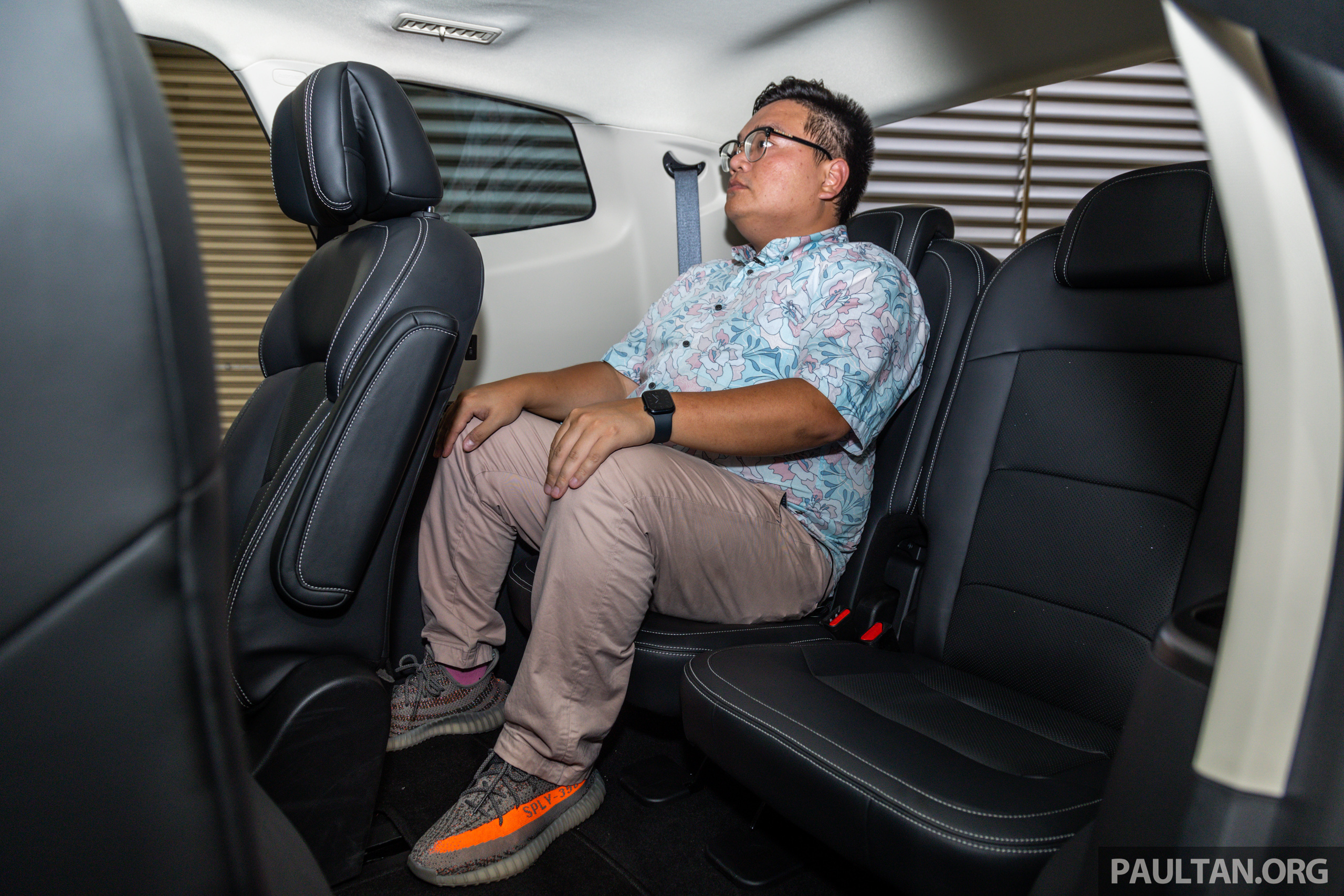


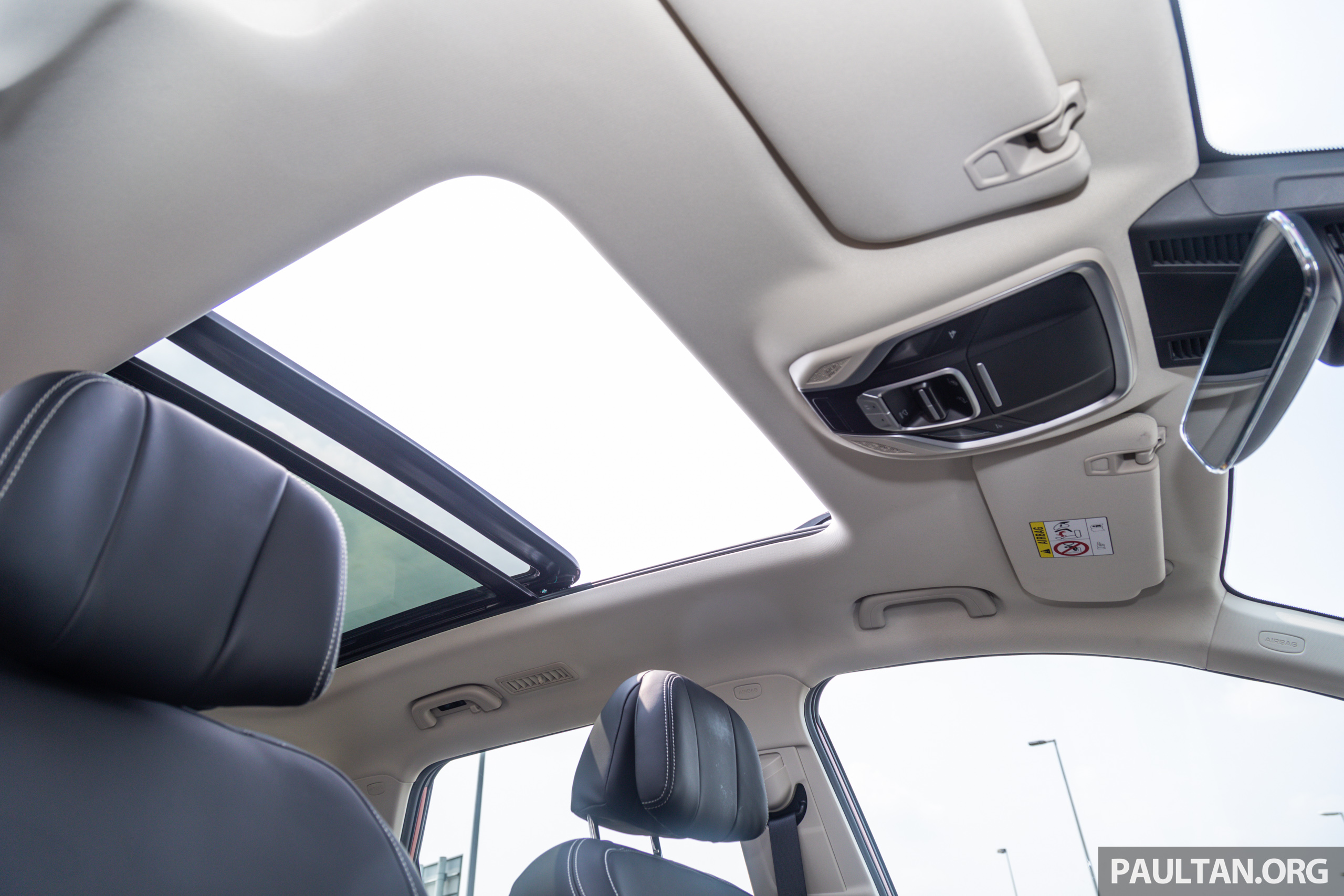
Third row passengers also get the roof vents, along with USB charging ports and indents for smartphones and cupholders. I tried out the rearmost seats for size and found the space to be quite good. Yes, the seat base is very low but that’s par for the course and you can’t be expecting stadium seating. These are not child-only seats and adults fit reasonably well – this is a good unique selling point at the X90’s price point.
However, the second row seat folding mechanism is more complicated than the one-touch-tumble system you’ll find in many MPVs. You have to first pull the ‘quick release’ latch (which feels quite flimsy) and push the seat forward. To get the seat back in place, you need to pull the same latch and push the seat back, but the bench will then go all the way back to its rear-most position. To get middle ground, you’ll have to pull the base of the seat forward again. It’s far from single action and the SOP can be simplified for sure.
The so-called captain seats of the Flagship is paired with a generously-sized panoramic glass roof and I can imagine how pleasant it’ll be on cool evenings and sightseeing after dark. The good thing about the individual chairs is that they are ventilated (yes, four ventilated seats in total), but other than the gap between passengers, the seat itself isn’t very big and the base is quite short too. The wings on the headrest doesn’t quite fold enough and there’s only one attached armrest (inner side). They’re not bad, don’t get us wrong, just not very VIP.
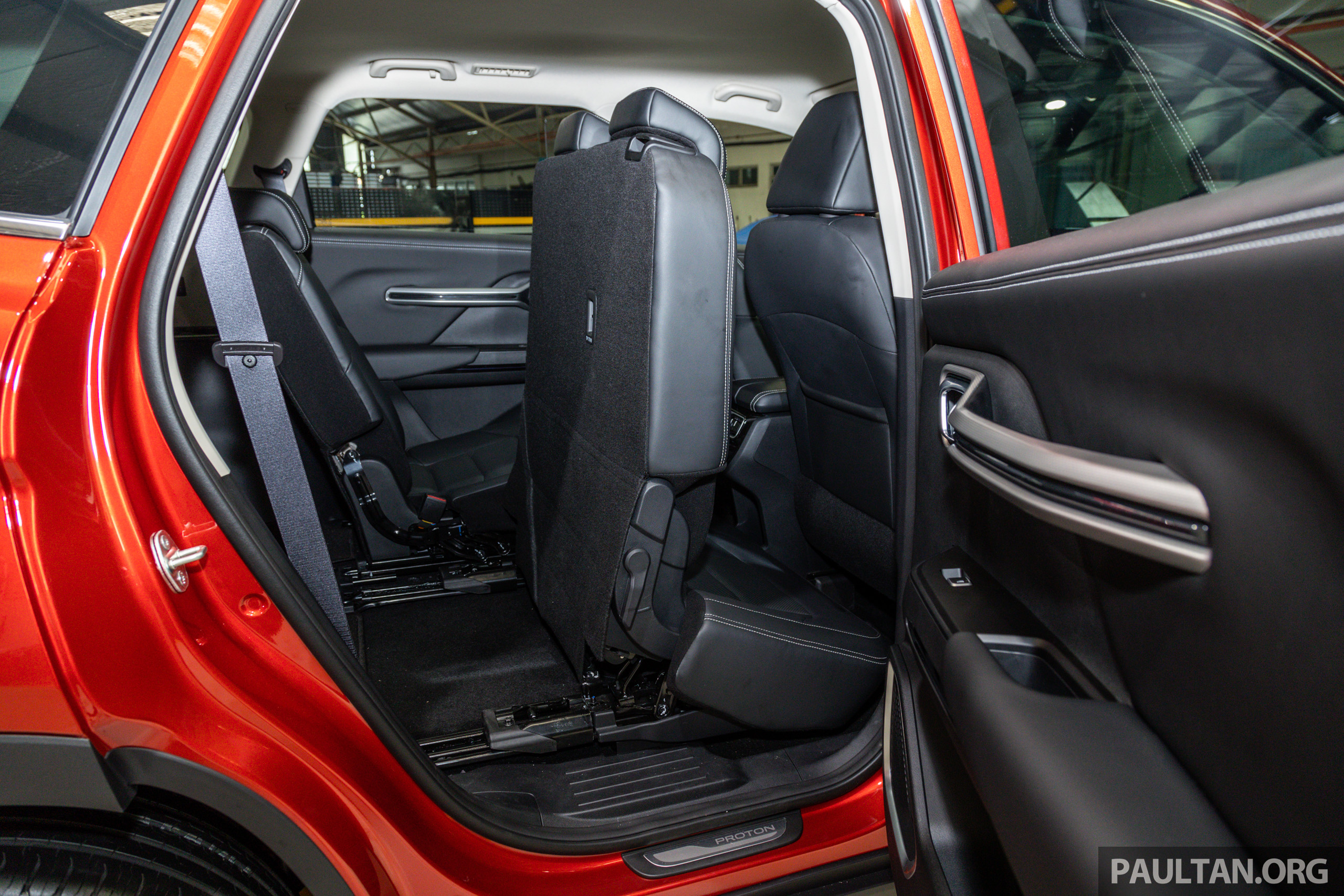
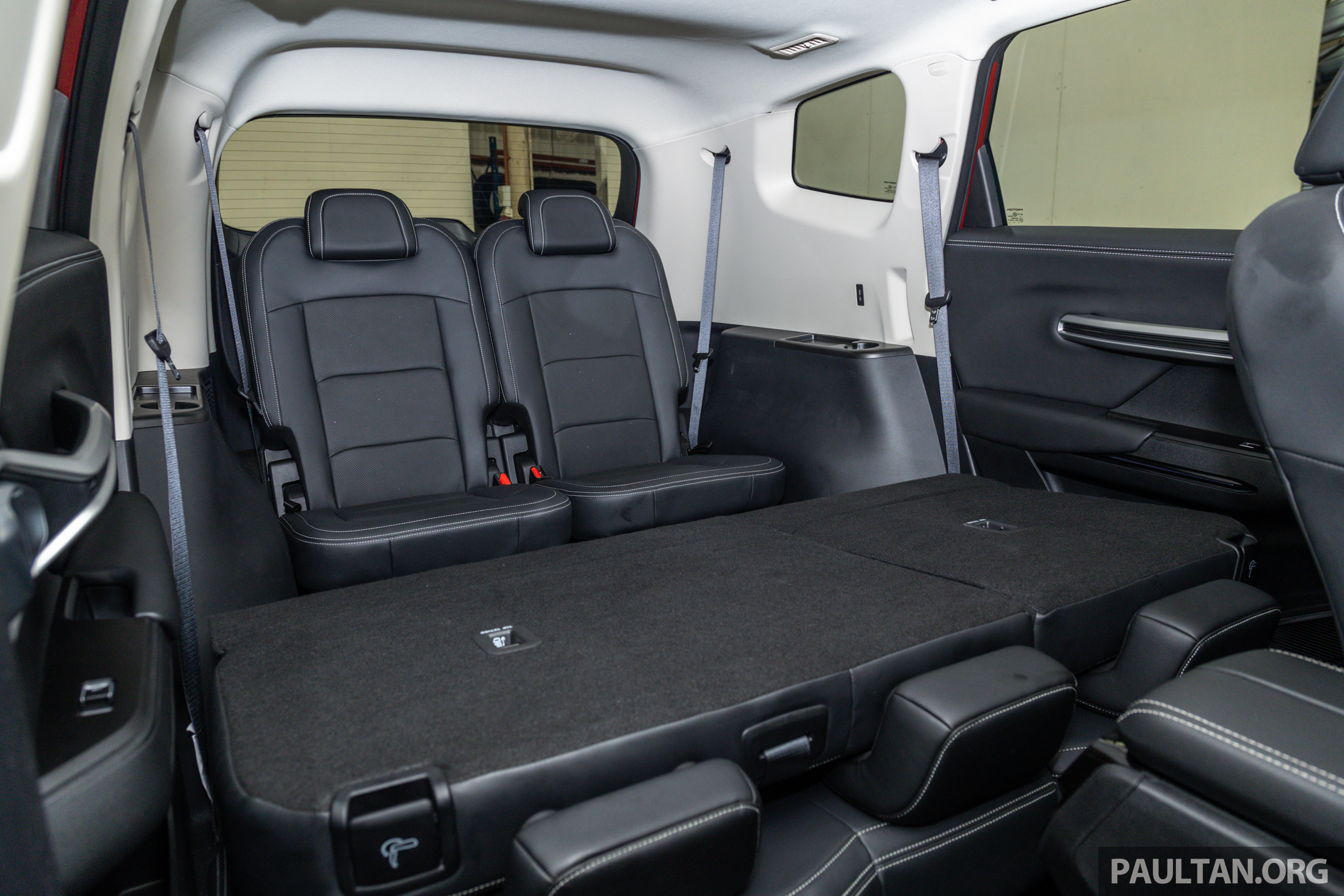
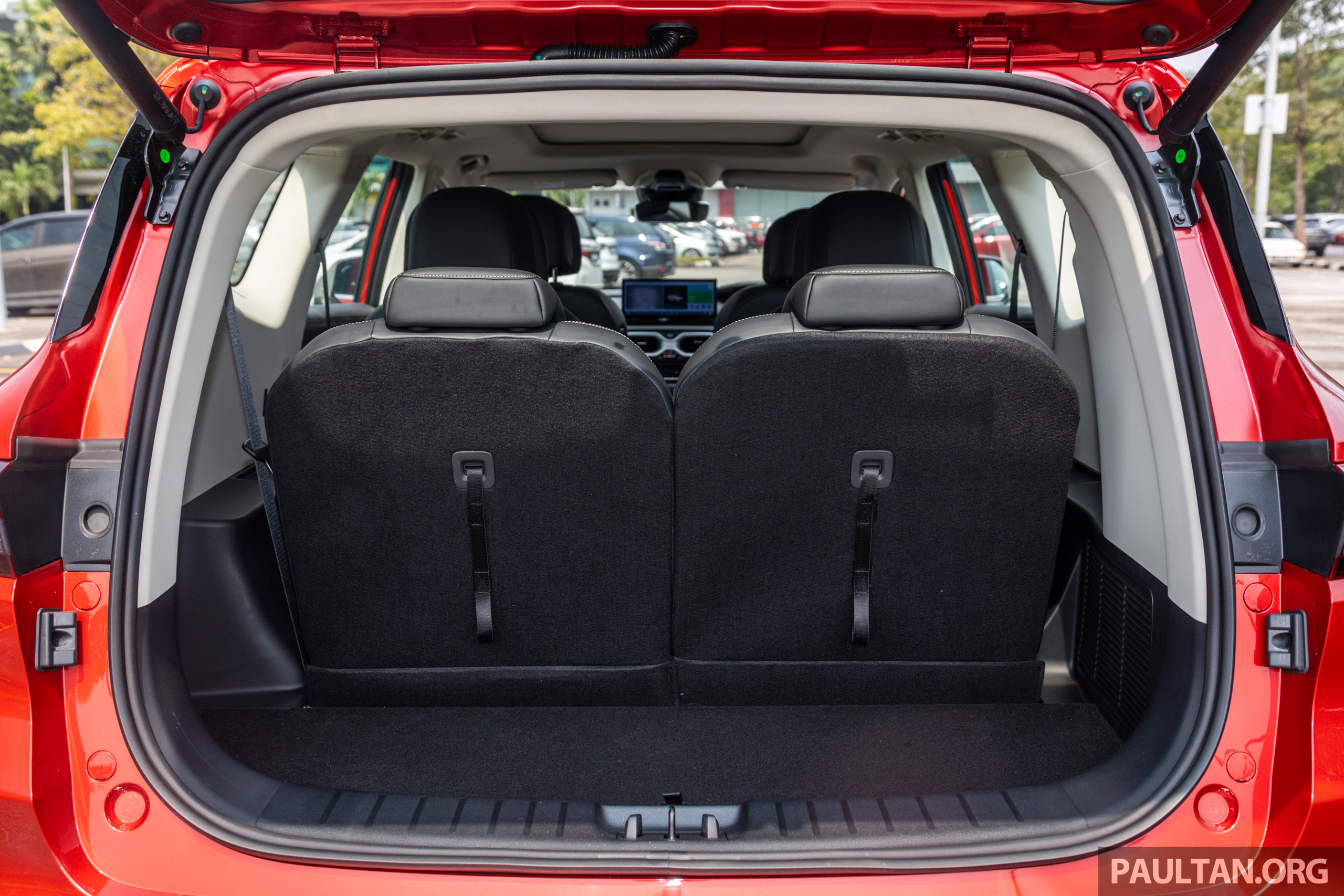
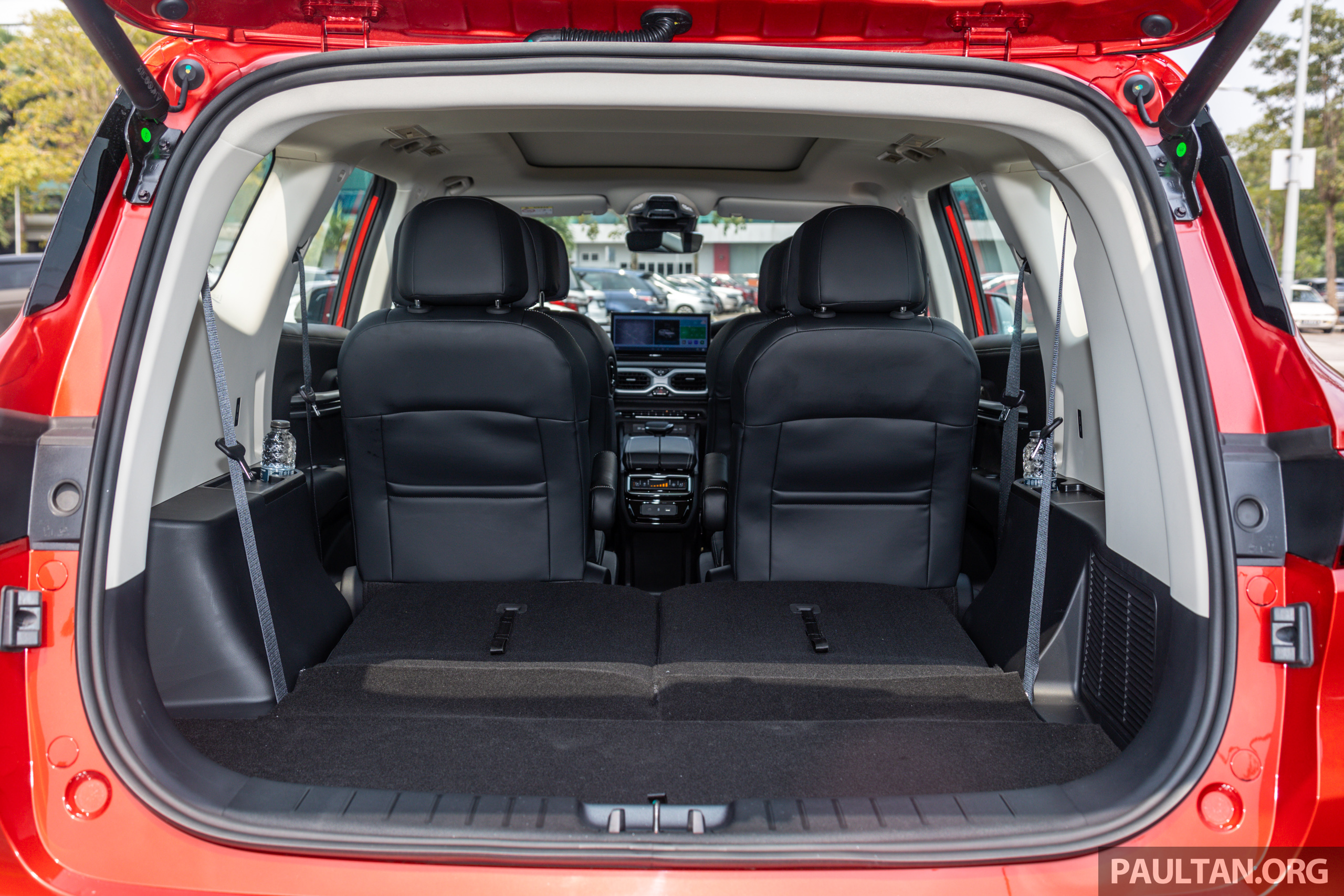
Access to the third row in the six-seater is more straightforward, but is best left for smaller sized people or the nimble-bodied. You need to crouch and walk through the narrow aisle, but as mentioned, once in there, space is good.
So, there you have it, our first impressions of the Proton X90 from all three rows. This big SUV is a bit of a mixed bag for me as the initial impression isn’t “wow, this is actually quite nice”, just like the first time we sat in the X70 and X50. The X90 is less premium-feeling in materials and design, even though its the flagship of the range. In isolation, it’s not bad, but perhaps Proton set itself a pretty high bar with previous SUV efforts.
The X90 is very well-equipped though, and its two screens look good. On the flipside, there’s no Apple CarPlay and Android Auto to take full advantage of the generous screen real estate. Its true seven-seat capability is a strong selling point for larger families. Cooling is a strong point thanks to the roof-mounted vents and ventilated seats for the captain chairs in the Flagship. Don’t laugh, because we all know how much weight Malaysians put on AC.
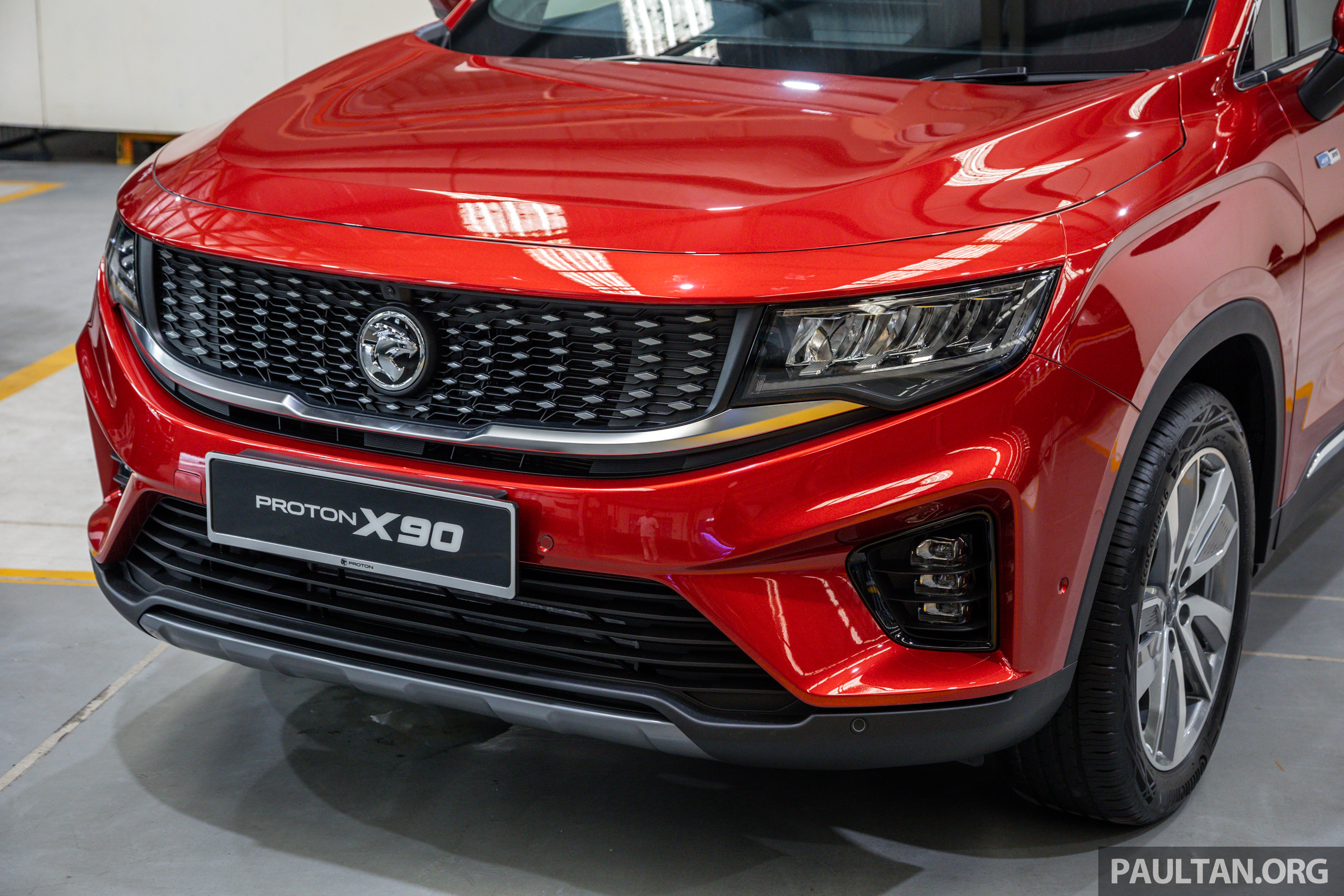
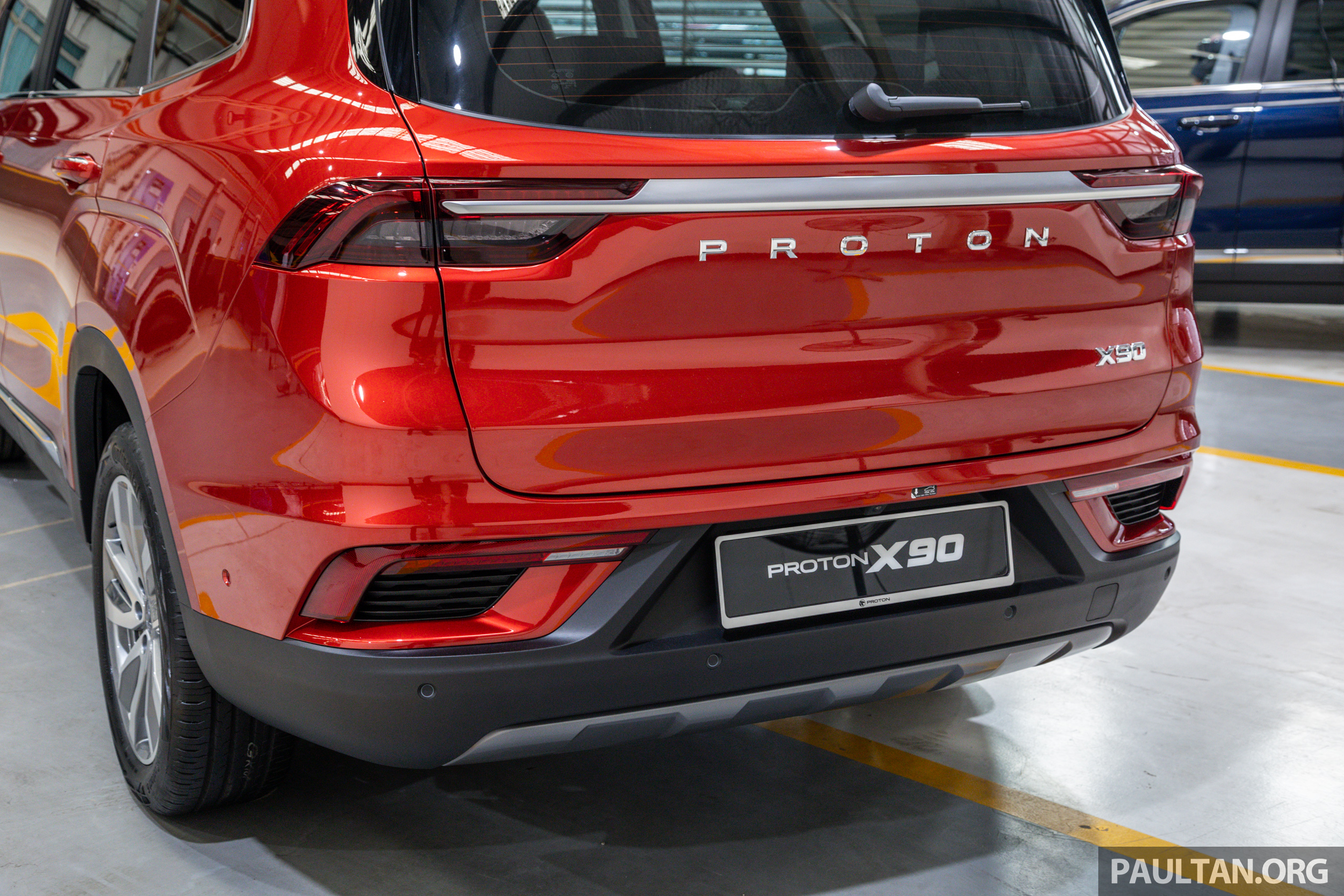
On the move, it doesn’t have bags of torque in reserve, but the 1.5L mild hybrid powertrain is adequate for normal driving and most situations. And it’s only normal to hear an engine that has to work hard. Bear in mind our challenging test route and mental comparisons with the X70, which sets a very high bar for comfort and isolation. We’ll give the X90 the usual comprehensive test drive treatment when the car is launched.
We have to make notes, that’s what we do, but context is important. How you view the X90 will depend on what car you’re upgrading from. If that’s a national brand MPV, the X90’s lack of ample performance reserves won’t be apparent, and I doubt that there will be many, if any, X70 owners moving to the X90. Also, there aren’t many three-row SUVs in the market, and the X90 will undercut them all bar the utilitarian Perodua Aruz, a very basic vehicle.
Which brings us to perhaps the most important point. Everything that everyone evaluates is relative to price, and that’s fair – you get what you pay for, right? The X90 isn’t a perfect SUV, and some D-segment rivals might be better in certain departments, but Proton’s entry is set to undercut all of them by a good margin. We don’t know the X90’s price range yet, but if it’s around RM150k, some shortcomings can be overlooked, and SUV buyers will be considering it, especially those with higher space requirements.
GALLERY: 2023 Proton X90 Flagship
GALLERY: 2023 Proton X90 Premium
GALLERY: 2023 Proton X90 colour variants
Looking to sell your car? Sell it with myTukar.


